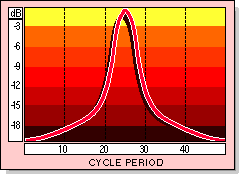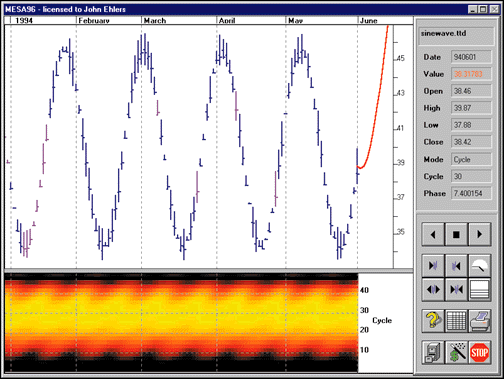There's no doubt about it: Market cycles can be difficult to identify. But if they can be measured, the payoff can be substantial. By measuring cycles, we have an independent parameter that frees us from using static indicators such as stochastics, the relative strength indicator (RSI), moving average convergence/divergence (MACD) or even moving averages with fixed settings. Measuring cycles enable us to dynamically adjust these indicators to current market conditions.
Currently, there are three popular methods to identify market cycles, and these are cycle finders, Fourier transforms? and maximum entropy spectral analysis? (MESA). Cycle finders, which are included in virtually all indicator toolbox software programs, basically measure the spacing between successive lowest lows (or other identifiable places in the cycle) and in general depend on finding an average value across a number of cycles.
Fourier transforms have long been a tool for scientific analysis but suffer from resolution problems in an attempt to satisfy stationarity constraints. Market cycles aren't long enough to make a good Fourier transform measurement. We'll go into more detail in a moment on this issue. We have adapted the MESA approach for market analysis from seismic exploration for oil, when obtaining information from a short burst of data is mandatory.

